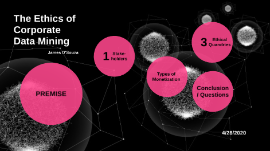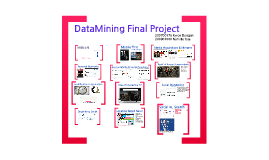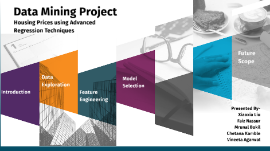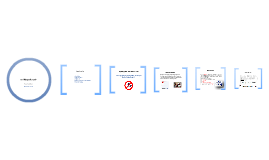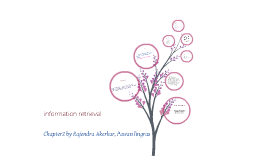Data mining presentation
Transcript: The Ethics of Corporate Data Mining James D'Souza 4/28/2020 Corporations Collect personal data for multiple reasons PREMISE WHY The Benefits It is easier to target advertisers Knowing how a person prefers helps better your own algorithm for maximum user attention Information gained can be sold to help mitigate outlying costs Knowing the user-base more intimately can help lead to business decisions Counter Argument Reasons Why its a Bad Idea If you really think about it #1 #3 #2 We do not know who receives our data Google and Microsoft applications come with the computer After "reading" a 60 page user agreement... HOW MUCH BANK WE TALKING 1 Stake- holders 1 FACEBOOK Facebook - net worth $86.2 Billion Stuff Facebook collects: Facebook collects about your browsing history Facebook collects about the apps you visit and your activity within those apps the advertisers who uploaded your contact information to Facebook more than two months earlier ads that you interacted with more than two months prior age, employer, relationship status, likes and location, expected net worth facial biometrics, medical conditions Based on contacts, it can assume social bubbles you are in. The data of an average American is worth between $0.20 and $0.40. assume international mean is $.15. $.15 x 1.62 Billion users is $243 Million. GOOGLE Google - net worth $133.3 Billion Stuff Google collects: Google collects about your browsing history Google collects about the apps you visit and your activity within those apps the advertisers who uploaded your contact information to Google based on how long you've gone since you've cleared your history. ads that you interacted with age, employer, relationship status, likes and location, expected net worth medical conditions, purchase history Watch times and engagement with advertisements. Ambient noise Google does not sell personal data. They manage it all in house. By optimizing their algorithm, they enable the products wanted to be advertised in a one-stop shop BING Microsoft- net worth $1 trillion Stuff MS collects: MS collects about your browsing history MS collects about the apps you visit and your activity within those apps the advertisers who uploaded your contact information to Microsoft media ads that you interacted with more than two months prior age, employer, relationship status, likes and location, expected net worth facial biometrics, medical conditions Watch times and engagement with advertisements. Microsoft does not sell personal data. They manage it all in house. By optimizing their algorithm, they enable the products wanted to be advertise in a one-stop shop Government Governments All chatter gets stored in some facility in New Mexico. I heard it on the internet once The US government buys bulk data to survey possible security threats China mass censors the internet, they set up social credit scores that have internet history among other things affect. Russia and China both use bot accounts to influence foreign policy that benefit from the echochamber environment created by the internet Forms of monetization Types of Monetization Advertisements Sponsorships Subscription based Crowd-sourcing Donations Data mining Advertisements Strengths/Weakness Weaknesses Strengths Money from a source that is not your user base Not effective unless data mining makes targeted advertisements You do not have to seek out patrons Opportunities Threats Disgruntled viewership Minimal intrusion into viewers finances User base get deals on products they might be interested Lauren Ingraham Incident Improves relations with a corporate entity via networking Trickle down economics failures Minimal interaction with sponsors SWOT- Sponsors Strengths/Weakness Weaknesses Strengths Money from a source that is not your user base Opportunities Threats Free merchandise No regular paycheck unless the collaboration is a constant thing False positive reviews User base get deals on products they might be interested Improves relations with a corporate entity via networking Economic sustainability of sponsors Downward spirals faster than advertisements Raid is a turn based rpg done right. In case you’ve been living under a rock and haven’t heard, raid is a badass mobile game that changes everything. The game is crazy popular, with almost 15 million downloads in the last 6 months. Raid is an epic dark fantasy done right. A hero collecting turn based game with over 400 champions to collect and customize. In raid you can get knights orcs undead and more. Raid with friends in a clan, claim glory in the pvp arena. Some other cool features are multi battle auto mode, set battles to run in auto mode while you do something else. Spend less time grinding and more time developing your team and finding the fun stuff. They also have weekly tournaments and events, such as fighting in the arena, running special dungeons, or leveling up your hero’s. There’s always a way to compete and win extra prizes every week. The game is growing In






